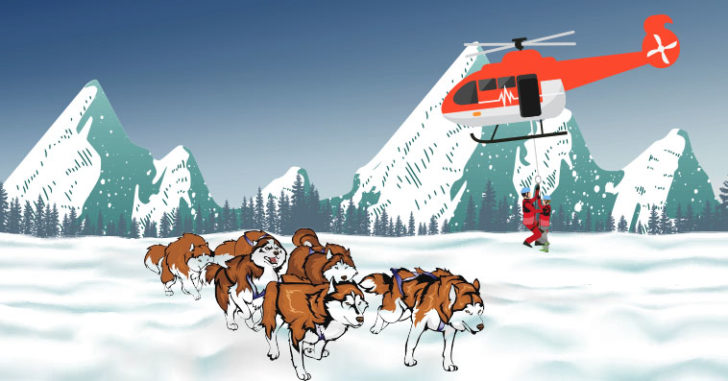Pets
The Eight Below Tale of Sakhalin Husky Dogs – Died in the Snow (Only Two Survived)
Table of Contents
About Sakhalin Husky:
The Sakhalin Husky, also known as the Karafuto Ken (樺太犬), is a breed of dog formerly used as a sled dog, but now nearly extinct. As of 2015, there were only seven of these dogs left on their native island of Sakhalin.
In 2011, there were only two surviving purebred members of the breed in Japan. The sole remaining breeder on Sakhalin, Sergey Lyubykh, located in the Nivkh village of Nekrasovka, died in 2012, but before his death he stated that there were no longer enough living specimens of the breed to allow for the genetic diversity necessary for continued breeding.
History
Karafuto Ken breaks down as Karafuto, the Japanese name for Sakhalin and Ken, a Japanese word for dog; hence, this provides the breed’s geographical origin. This breed is rarely used now; therefore, few breeders remain in Japan.
Explorers who went to Franz Josef Land, conquerors of northern Alaska, and South Pole explorers (including Robert Falcon Scott) used these dogs. They were utilized by the Red Army during World War II as pack animals; but that affair was short-lived after research proved that they were prodigious eaters of salmon, and not worth keeping.
Offshoots of the Sakhalin Husky are theorized to be the progenitors of longer-coated Akitas. (Sakhalin Husky)
Antarctic expedition
This breed’s claim to fame came from the ill-fated 1958 Japanese research expedition to Antarctica, which made an emergency evacuation, leaving behind 15 sled dogs. The researchers believed that a relief team would arrive within a few days, so they left the dogs chained up outside with a small supply of food; however, the weather turned bad and the team never made it to the outpost.
Incredibly, nearly one year later, a new expedition arrived and discovered that two of the dogs, Taro and Jiro, had survived and they became instant heroes. Taro returned to Sapporo, Japan and lived at Hokkaido University until his death in 1970, after which he was stuffed and put on display at the university’s museum. Jiro died in Antarctica in 1960 of natural causes and his remains are located at the National Science Museum of Japan in Ueno Park.
The breed spiked in popularity upon the release of the 1983 film Nankyoku Monogatari, about Taro and Jiro. A second film from 2006, Eight Below, provided a fictional version of the occurrence, but did not reference the breed. Instead, the film features only eight dogs: two Alaskan Malamutes named Buck and Shadow and six Siberian Huskies named Max, Old Jack, Maya, Dewey, Truman, and Shorty. In 2011, TBS presented the much-awaited drama, Nankyoku Tairiku, featuring Kimura Takuya. It tells the story of the 1957 Antarctica Expedition led by Japan and their Sakhalin Huskies.
The breed and the expedition are memorialized by three monuments: near Wakkanai, Hokkaido; under Tokyo Tower; and near Nagoya Port. Sculptor Takeshi Ando designed the Tokyo statues (he also designed the replacement Hachikō statute in front of JR Shibuya Station), which were removed, likely to be placed at Tokyo’s National Institute of Polar Research.
The birth of the Sakhalin Husky cannot be pin pointed to an exact date or year. However, we do know that they originated from Sakhalin, an island located in the most northern part of Japan (pre-1951). The southern half of the Sakhalin island belonged to Japan, while the northern half belonged to Russia. When the Japanese lost World War II, the prefecture was then occupied by Soviet troops.
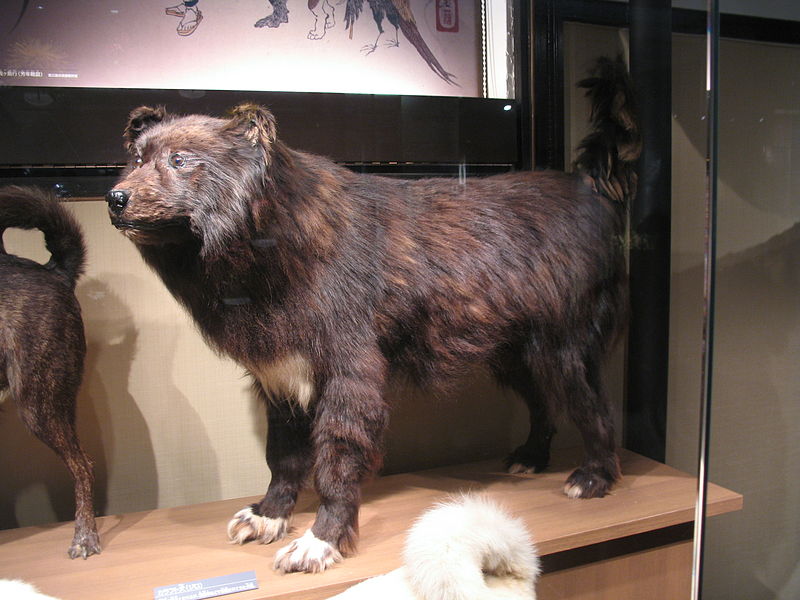
The majority died, some escaped, only two survived and waited for their team for 11 long months.
Both faced neglect, endured hunger, and suffered loyalty, but never gave up on their owners’ love.
Without a doubt, Taro and Jiro have raised the name of their canine companions and emerged as the most requested dog breed in 1990.
Following the fame, Japanese and American directors stepped forward to commemorate the sacrifice and courage shown by the dogs.
They made different movies.
The first movie was the true story of Nankyoku Monogatari. Nankyoku Monogatari is a Japanese idiom; It means “Antarctic Tale” or “South Pole Story” in English.
The other movie produced by Walt Disney under the name Eight Below.
It was about eight surviving packs of huskies.
In the movie, the director used purebred huskies for the role of Sakhalin Huskies.
Many people were confused after the movie, eight six of a true story.
FYI, yes!
Three movies based on Eight Under True Story have been released so far.
Although the directors made some changes according to the box office demand, the plot of the story is real.
Before you go to read the full true story of the Sakhalin Husky, you can get an insight into the Japanese dogs, Taro and Jiro, the survivors, the breed, its origin and how it came to the brink of extinction.
| Breed and Name | ||
| Famous Name | Sakhalin Husky | |
| Other Name(s) | Karafuto-Ken, Karafuto Dog, (樺太犬) (in Japanese), Japanese Husky, Japanese Dog, Polar Husky Dog | |
| Breed Type | Purebred | |
| Recognition | No recognition by any canine club, including AKC – American Kennel Club and FCI – Fédération Cynologique Internationale. | |
| Origin | Sakhalin (Island between Japan and Russia) | |
| Life Expectancy | 12 – 14 years | |
| Physical Traits (Body Types) | ||
| Size | Large | |
| Weight | Male | Female |
| 77 pounds or 35 KG | 60 Pounds or 27 KG | |
| Coat | Dense and Thick | |
| Colors | Black, Cream White, Russet, | |
| Personality | ||
| Temperament | LoyaltyLoveActiveHard workFriendliness | ⭐⭐⭐⭐⭐⭐⭐⭐⭐⭐⭐⭐⭐⭐⭐⭐⭐⭐⭐⭐⭐⭐⭐⭐⭐ |
| Brain | Memory Intelligence Learning Speed | ⭐⭐⭐⭐⭐⭐⭐⭐⭐⭐⭐ |
| Barking | Occasionally or only when hurt sensitively |
Based on the aforementioned traits, Taro, Jiro and other companions were loyal dogs as stated in the story and in the movies.
The Eight Below True Story:
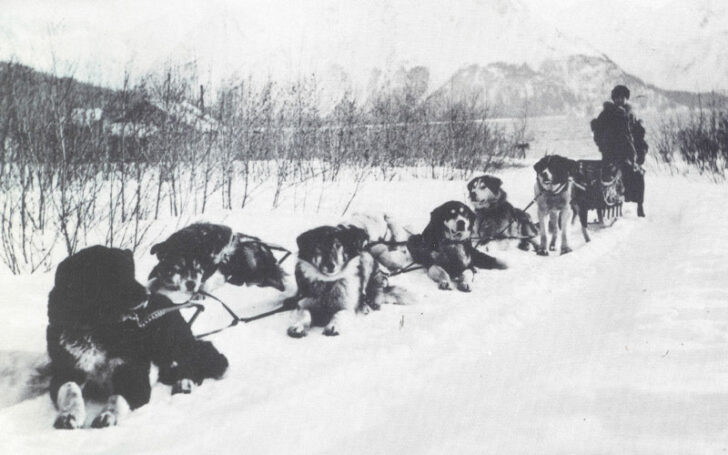
It was a cold January morning during the International Geophysical Year in 1957, and a team of researchers accompanied by 15 (all-male) dogs went on a winter trip.
The dogs were Snow Husky or Karafuto-Ken and belonged to the Sakhalin Husky breed.
The Japanese Antarctic Research Expedition or JARE team decided to relocate to Sapporo, the northern part of Japan, in Syowa (Soya).
According to the plan, the team was supposed to stay there for a year for research. A year later, another team of several researchers would travel to the Base to complete the work left by the first team.
The dogs were at the Base to help them with the dog sled at the Siberian outpost.
For your information, Polar Japanese Huskies are trained and very good at pulling weights and sleds. These dogs are very loyal, playful, friendly and safe. The only problem there is their appetite.
A Karafatu Ken eats 11 tons of Salmon a day. (Sakhalin Husky)
Snow Strom at on the way to Syowa:
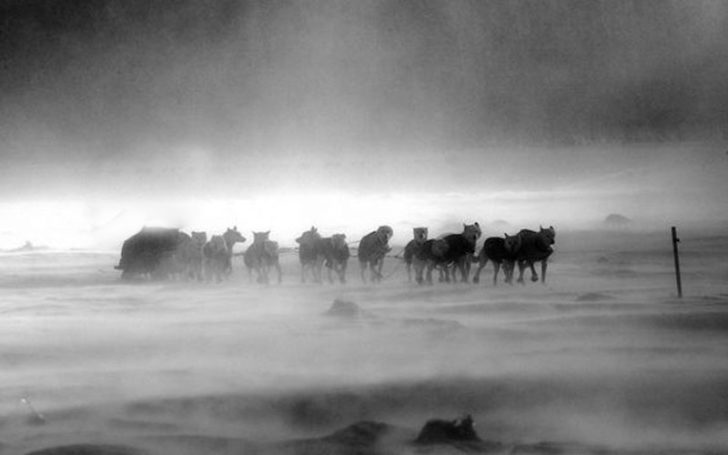
According to the return plan, the team, 11 researchers and 15 dogs had to travel in an Icebreaker from the Base to reach the station on East Ongul Island in one day.
However, nothing went according to plan as a severe storm hit and left them stranded on the ice…
With the snow getting worse day by day, the team was now far from the Base and the city.
They were all struggling and praying for survival.
The dogs and humans were together facing the dangers of life and short supply of food, while Polar Husky companions were always hungry to eat Salmon.
The Research Team leader was constantly trying to contact the Japanese Ice Base and the authorities, but everything was in vain.
Also, as the food supply was constantly decreasing, Snow was getting denser with every passing moment.
There was no sign of survival but then a United States Coast Guard Icebreaker found them at the Bruton Island. (Sakhalin Husky)
Rescue and Separation between Loyal Dogs and Their Owners:
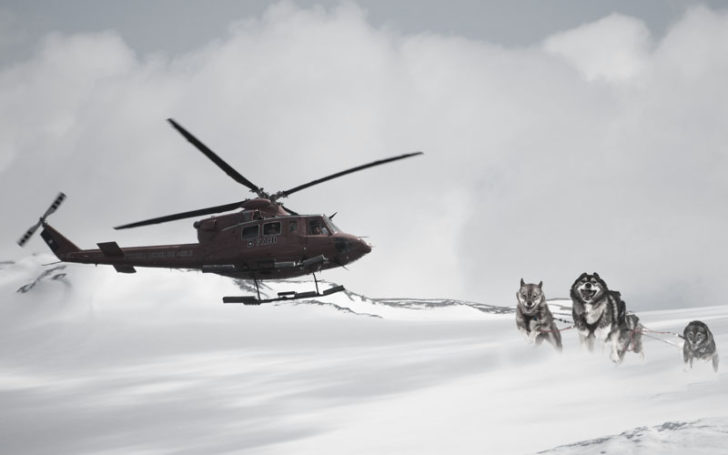
The team was rescued by the Icebreaker of the United States Coast Guard, they had managed to contact the Japanese authorities.
A helicopter arrived to rescue the researcher from the storm and asked them to drop their belongings and go immediately.
However, the dogs could not be rescued, as they were fat and large and totaled 15, they could not fit in the Chopper.
People had to leave their canine companions in chains with a limited stock of Salmon and on the spot thinking the next expedition team would be here in a few days to take good care of the huskies.
The researchers, who had a good time with the dogs, were very emotional when they said goodbye to the sled leaders behind them.
However, they were severely criticized for leaving poor animals to die.
Team members still tried to justify themselves, but no one could confirm the reason for leaving the 15 loyal dogs behind. (Sakhalin Husky)
Fifteen Dogs and Their Fate in The Snow:
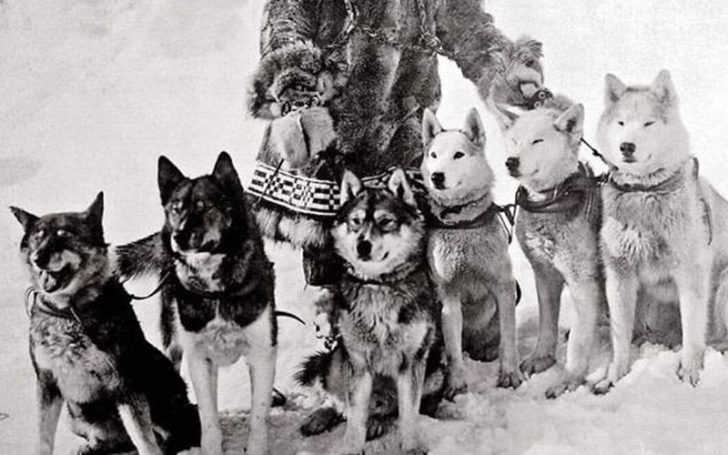
They were a total of fifteen dogs in chains, without enough food to survive even a week, and no hunting training.
Since the hair on the body and face of these dogs is thicker like polar bears; so the Japanese Exploration Researchers were more worried about hunger than cold.
They feared an explosion of cannibalism among the Kens.
However, fate turned out to be even more cruel for the dogs when the second group’s descent to the Base was suspended.
Fifteen dogs, who are very loyal and loving to their owners despite their loyalty, suffer and await their death or survival; It’s like there is no other option.
The team releases the list of dogs left behind. (Sakhalin Husky)
The names were:
| Name | Designation in team |
| Riki | Leader of the team |
| Anko | Sledder |
| Kuma from Monbetsu | The second leader of the team |
| Kuma from Furen | Sledder (Taro and Jiro’s father) |
| Deri | Sledder |
| Jakku | Sledder (resembling a Collie Dog) |
| Shiro | Sledder |
| Taro | The Hero |
| Jiro | The Hero |
| Aka | Belligerent; ready to pick a fight with other members of the pack |
| Pesu | Sledder (resembled Belgian Tervuren dog) |
| Goro | Sledder (resembling a Collie Dog) |
| Pochi | Sledder |
| Kuo | Sledder |
| Moku | Sledder |
Return Of Expedition At Syowa Base – After 365 Days, One Year:
It took a year for the JARE members (Japanese Antarctic Research Exploration Program) to return to the Base and resume their research work on January 14, 1959.
This was the time to find out what happened to the dogs left behind, and it was time for Taro and Jiro to be heroes.
When JARE reached the police station, they hoped to find the remains of the dogs’ bodies, but to their surprise only seven were found dead.
The bad fate of Monbetsu Pochi, Kuro, Pesu and Moku’s Aka, Goro, Kuma never allowed the seven dogs to survive.
The rest were on the ice, chained to collars gifted by their owners.
Other than that, the other eight dogs had managed to shift their necks and were not on top.
During the research, no other dog was found alive, except for Taro and Jiro.
The youngest three-year-old members of the husky swarm were discovered around the base.
The rest of the six were never found. Riki, Anko, Kuma, Deri, Jakku, Shiro were among some of the treasures that had left their masters.
What happened next to the true story of the eight surviving dogs? (Sakhalin Husky)
Taro and Jiro the Star Canines and Traditional Heroes of Japan:
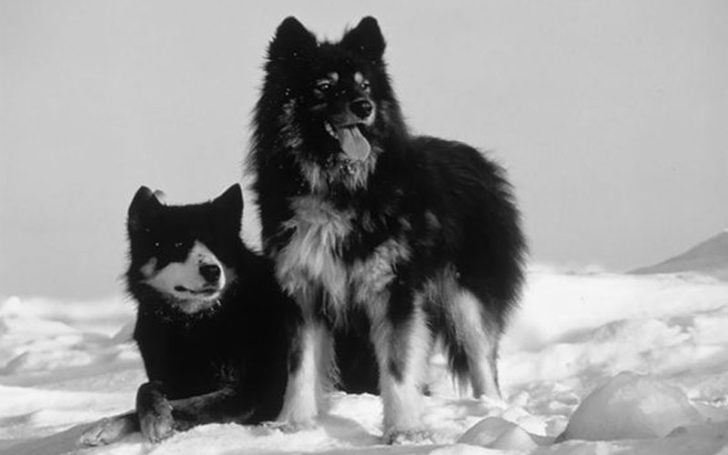
When news of Jiro and Taro’s survival and discovery hit the news channels, every Japanese and Englishman was eager to find a breeder and adopt a Karafuto dog. (Sakhalin Husky)
In 1990 demand was very high.
The hero dog brothers were the sons of Kuma. Kuma was also part of a research team with a Japanese husky dog from Antarctica’s Furen point.
He was a purebred and one of the eights who survived and character of the Eight Below true story film.
But Kuma has disappeared and no one knows where he went with the other five dogs. Despite being on the verge of extinction, Taro and Jiro still live in the hearts. (Sakhalin Husky)
Some interesting facts:
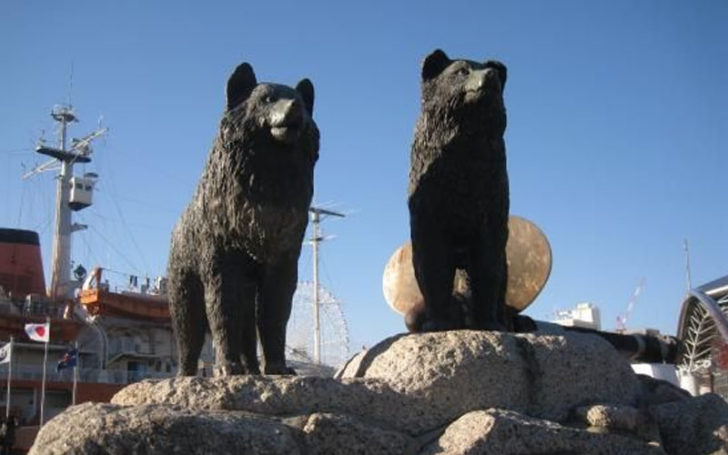
When the Japanese team reached the base, they found two dogs Jiro and Taro roaming around the base. (Sakhalin Husky)
Although the canine brothers are alive; but their health was telling of their survival tragedies.
The team told the channels exciting facts about dogs:
- Brothers Taro and Jiro never left the base and waited for their human friend to come back, though they didn’t know if they would come back.
- Kuma’s sons learned to hunt penguins and seals to fill their stomachs and survive.
- They survived without human assistance for almost a year.
- As the JARE team found no signs of cannibalism, they never ate the rest of their deceased friend.
Jiro continued to work with the team for about a year and died in 1960. (Sakhalin Husky)
Before his death, as leader of his team, he dog sled in the Siberian outpost and served them to the end.
Jiro’s cause of death was natural. Jiro’s body was embalmed at the National Museum of Nature and Science. (Sakhalin Husky)
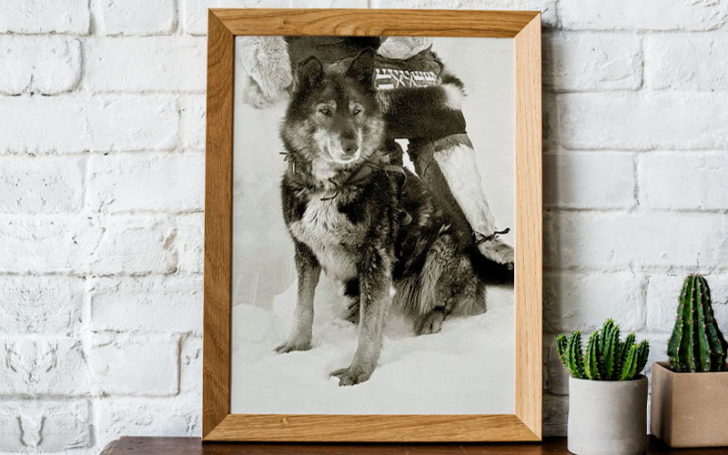
Taro, his health no longer allowed him to work. Therefore, he came to his hometown in Sapporo and rested at Hokkaido University in Tokyo until 1970, when he finally passed away. (Sakhalin Husky)
The body of this hero is also displayed for memory at the Museum of National Treasures of Hokkaido University.
If you go to Japan, go to Hokkaido University in Sapporo and ask where the Botanical garden is, Taro’s body is there. (Sakhalin Husky)
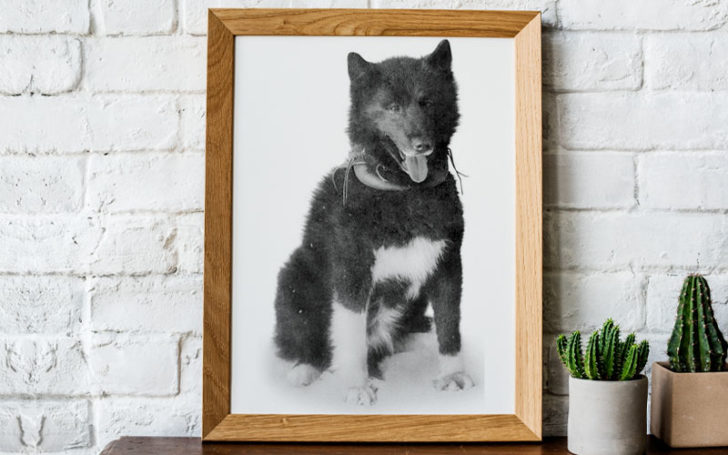
Dogs, of which 8 survived and 7 sacrificed their lives, their monuments are scattered all over Japan, speak of the courage and sacrifice expected.
JSPCA, Japanese Society for the Prevention of Cruelty to Animals, paid the first-ever tribute, in 1959, when Jiro and Taro, both were found and still alive. (Sakhalin Husky)
Where to Buy Polar Husky Puppy – Sakhalin Husky for Sale?
The Sakhalin Husky breed is on the verge of extinction, although it is very popular and searched on the Internet.
According to sources, until 2011, only two purebreds of the Sakhalin Husky breed remained in the world.
Therefore, if you need to buy a Sakhalin Husky dog or puppy, you can find a hybrid husky dog or a purebred husky.
Recommended because if we compare Sakhalin Husky VS Siberian Husky, there is not much difference other than Kurafato ken’s face.
It looks more like a polar bear, at the same time the Siberian dog looks like a wolf.
The market price of the dog will vary according to the availability and purity of its breed. (Sakhalin Husky)
Bottom Line:
All dogs are unique and love their owners more than life and oxygen.
Not just Sakhalin dogs have sacrificed themselves for the sake of love they had for humans, but there are many more, including Hachiko, the Akita breed dog, and Laika, a mongrel to be the first dog to go in space.
People often ask what breed was Laika; the answer is unknown, some people claimed it a purebred of Russia while others think it was mix or mutt. Still, it helped humans in their unique way.
As long as it’s a dog, it shows that you shouldn’t worry about the breed because no matter what, it will never leave you alone when needed. (Sakhalin Husky)
Also, don’t forget to pin/bookmark and visit our blog for more interesting but original information.

